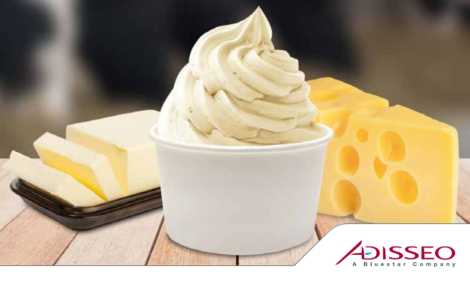



Randall Lineback Cattle - The Breed that Saved America
The Randall Lineback is among the oldest breeds of cattle in the US with origins back to the Pilgrim Fathers. The Randall family in Sunderland, Vermont had sustained this heritage breed since 1912, writes John Wilkes.According to legend, ancestors of today’s Randall Linebacks under orders from George Washington were used to pull sleds carrying abandoned French cannon under the cover of darkness to a spot overlooking unsuspecting and ultimately doomed British positions during the Battle of Boston in 1776.
Unknowingly the Randall family preserved the one remaining connection to early American landrace cattle, though Randall Linebacks today are critically endangered, teetering close to extinction.
There is cause for hope. The slogan “Eat them to save them” is exhibiting some success due to the distinctive flavour of Randall Lineback meat. Localised characteristics were bred into these cattle over centuries. The Randall Lineback became “an all round cow” – a sure-footed draught animal and a “milker” prior to consumption.
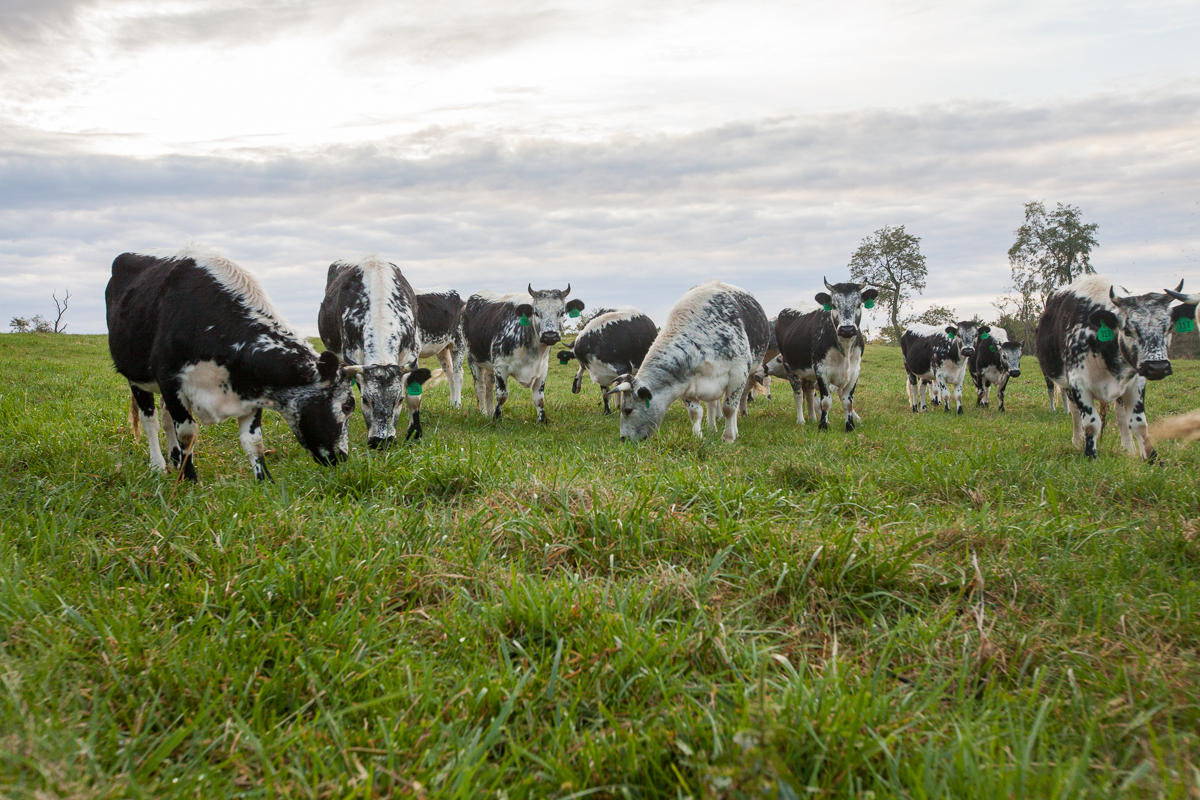
Randall Linebacks at Chapel Hill Farm, Berryville, VA
Ironically, 237 years later, direct descendants of Washington’s heroic oxen are in evidence on restaurant dining menus in the nation’s capital.
It is the eating experience, says Joe Henderson of Chapel Hill Farm, Berryville, Virginia, of his aptly branded Randall Lineback Ruby Veal that deserves its distinct reputation.
Branding meat “Ruby Veal” was brave. The veal moniker carries stigma. Forty-four States in the US still allow individual confinement in production of “Special Fed” white veal. A 100 per cent diet of whey based milk replacer does little to enhance the image. This rearing method still produces the bulk of veal in the US.
Mr Henderson has harsh words for United States Department of Agriculture (USDA): “They still sanction veal that never sees the outdoors. Animals are removed from their mothers after a few hours, can’t socialise or move about to produce this anaemic white meat.”
100 per cent pasture-raised veal from Chapel Hill Farm’s Randall Linebacks could not be more different; something recognised by more than 25 of Washington, DC’s leading chefs and restaurateurs. The results of a life led outdoors for its entirety and heritage genetics produces deep rich red, low fat meat that is subtle and soft. No doubt Randall Ruby Veal sells itself.
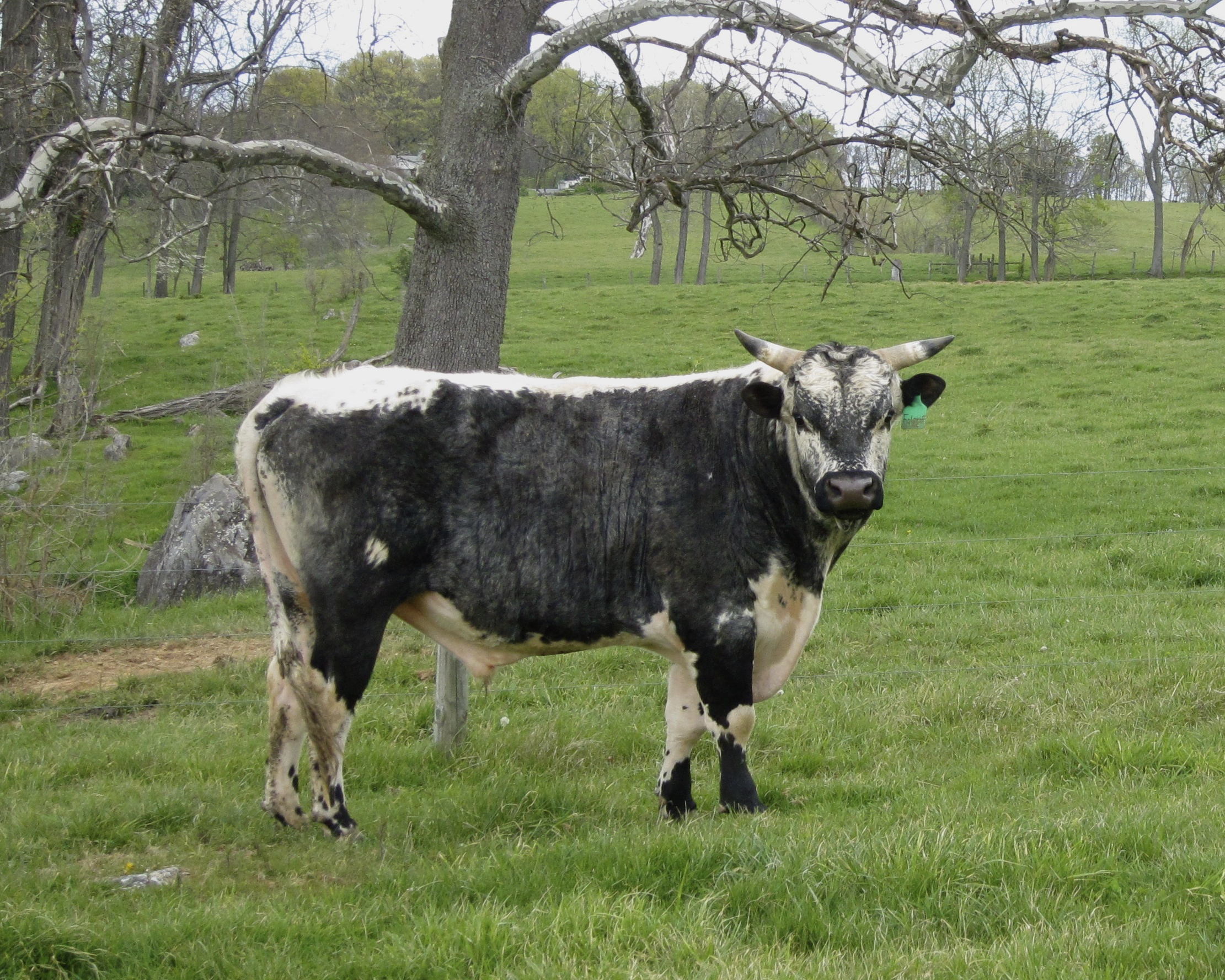
One of the Randall Lineback stock bulls at Chapel Hill Farm
The Randall Lineback had all but disappeared when Joe Henderson took an interest. He purchased 15 females and six bulls in 2002 from Cynthia Creech, direct descendants of animals purchased from the last surviving member of the Randall family in 1985.
Confronted with limited genes, Mr Henderson sought genetics advice from Dr Phil Sponenberg, DVM, PhD at Virginia-Maryland College of Veterinary Medicine. Dr Sponenberg instituted a breeding programme tailored to slender genetic resources. A combination of strict breeding protocols and embryo transfer enabled Joe Henderson to cultivate his herd to its existing 600 head.
Cows are managed as five separate family groups labelled A to E. Herd Manager, Noah Travers explained: “We keep a bull every year from each group. Bulls breeding group A have sons in breeding group C, with their sons in breeding group D and their sons in breeding group E and so on. The boys circulate and the girls stay.” Each cow family divides further into Spring and Autumn calving creating 10 groups each accompanied by two stock bulls.
The result is 25 bulls retained to serve a 250 cowherd. With low bull/cow ratios in multiple breeding groups and strict adherence to the original plan devised by Dr Sponenberg, the herd prospers genetically.
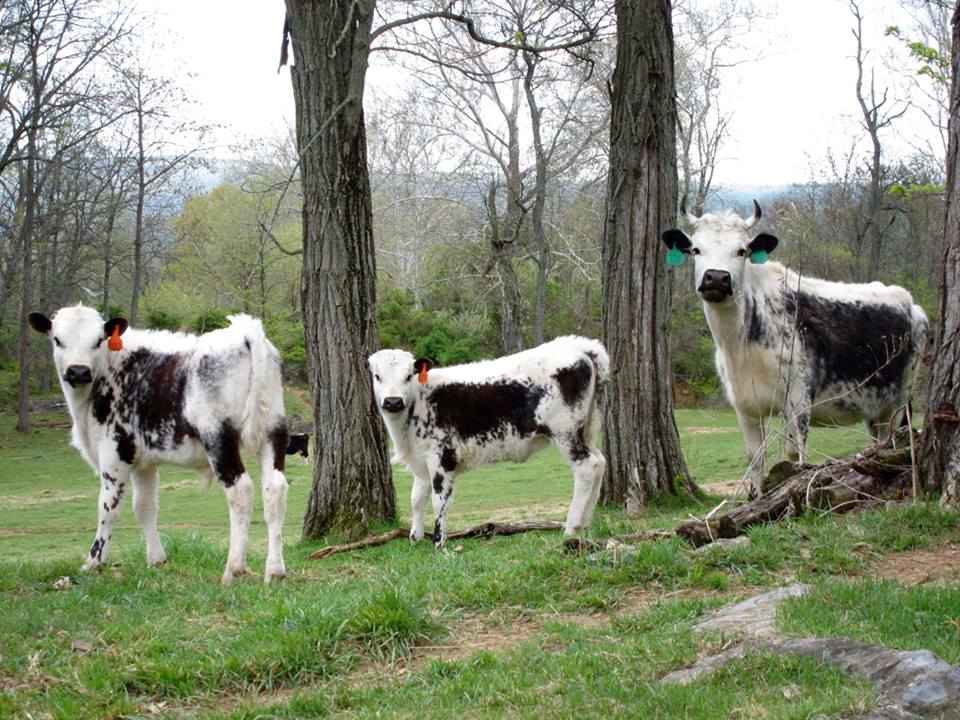
Randall Lineback calves at Chapel Hill Farm
Fertility had been an issue with pregnancy rates in Randall Lineback females as low as 50 per cent. Detailed records of maternal characteristics help to foster improvement.
Mr Henderson added: “Comprehensive records note all aspects on the maternal side. It’s not just about always raising one calf a year, but how the cow raises the calf and is she a good mother.” Each female is given a fertility rating from recorded data.
Substantive embryo transfer (ET) has also bolstered cattle numbers affording choice and the luxury of not needing to keep every female born in the herd. The majority -70-80 per cent of the Chapel Hill Farm Randall Linebacks is registered with The Randall Lineback Breed Association. Females not making the grade enter the food chain.
Chapel Hill Farm management dictates beef calves spend their lives outdoors – a rearing option perceived to be the healthiest. Weaning is a gradual process before finishing.
Selection for slaughter of these multi-purpose cattle is not an exact science. Noah Travers commented: “There’s a sweet spot between 280kg-320kg carcass weight. Under that there is too much bone, not enough meat. The bigger carcass is not as finely flavoured.”
Anderson Plunket, Assistant General Manager at Black Restaurant Group, Bethesda, Maryland highlights appreciation of “Ruby Veal” in the Greater Washington, DC food scene.
Black order a whole animal once a month from Chapel Hill Farm and have done so for more than seven years. The meat is used at their five well-established popular eateries in the Washington DC Metro area.
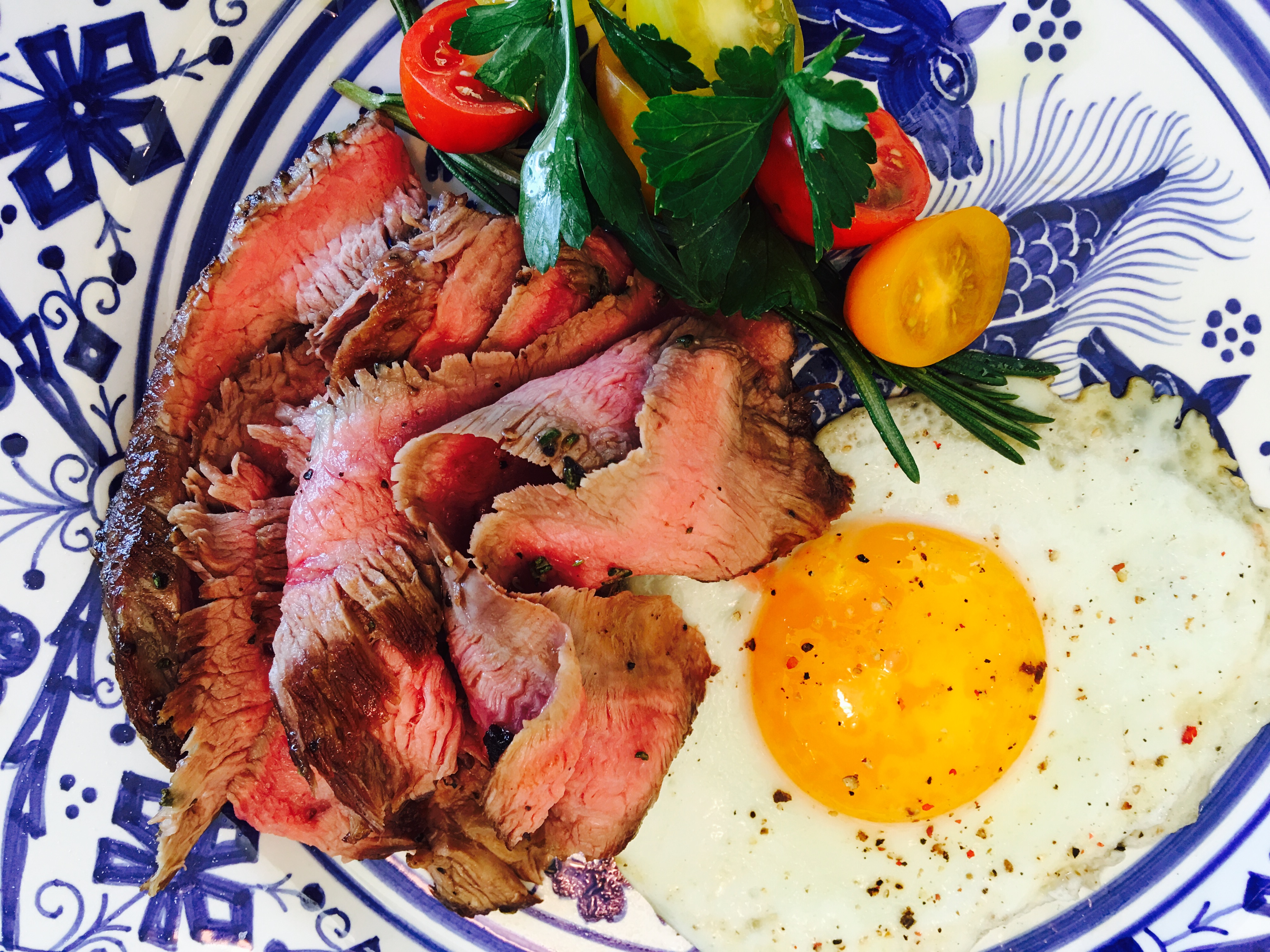
Flank steak and eggs at Chapel Hill Farm
Mr Plunket commented: “The meat is perfect for us. It’s totally unique and we use every inch of the cow. There is Randall influence across all our menus.”
Adding further: “The chops and prime cuts go to our steak operation; the rest of the animal is broken down into cuts like scaloppini. It creates wonderful bolognaise and sauces, even head cheese and marrow all utilised across our other restaurants.”
Customers concerns about the ethics of serving veal in a Black restaurant are easily overcome by detailing unique pasture based husbandry techniques implemented at Chapel Hill Farm to produce Ruby Veal. Mr Plunket added: “Our staff is also knowledgeable about the Randall Linebacks fascinating heritage story.”
Their survival and future prosperity go hand in hand with the successful promotion of this unique young beef. The focus is on its story and its delivery as a first class product to ensure sustained growth and popularity.
Mr Henderson concluded: “Bottom line – We are trying to save this breed. We need a 1,000 of these animals on four to five farms producing marketable meat and then they’ll survive. If not, it’s just not going to happen.”

John Wilkes
Freelance journalist
John Wilkes is a former UK sheep and beef producer now living in Washington DC. His experience in both the UK and US gives him a unique perspective on livestock and food production.
Nowadays he writes and consults about livestock and agriculture. He also hosts a broadcast radio programme called The Whole Shebang on Heritage Radio Network from Brooklyn, New York.
John is a board member of The Livestock Conservancy in the US and a member of The American Sheep Industry Association.


